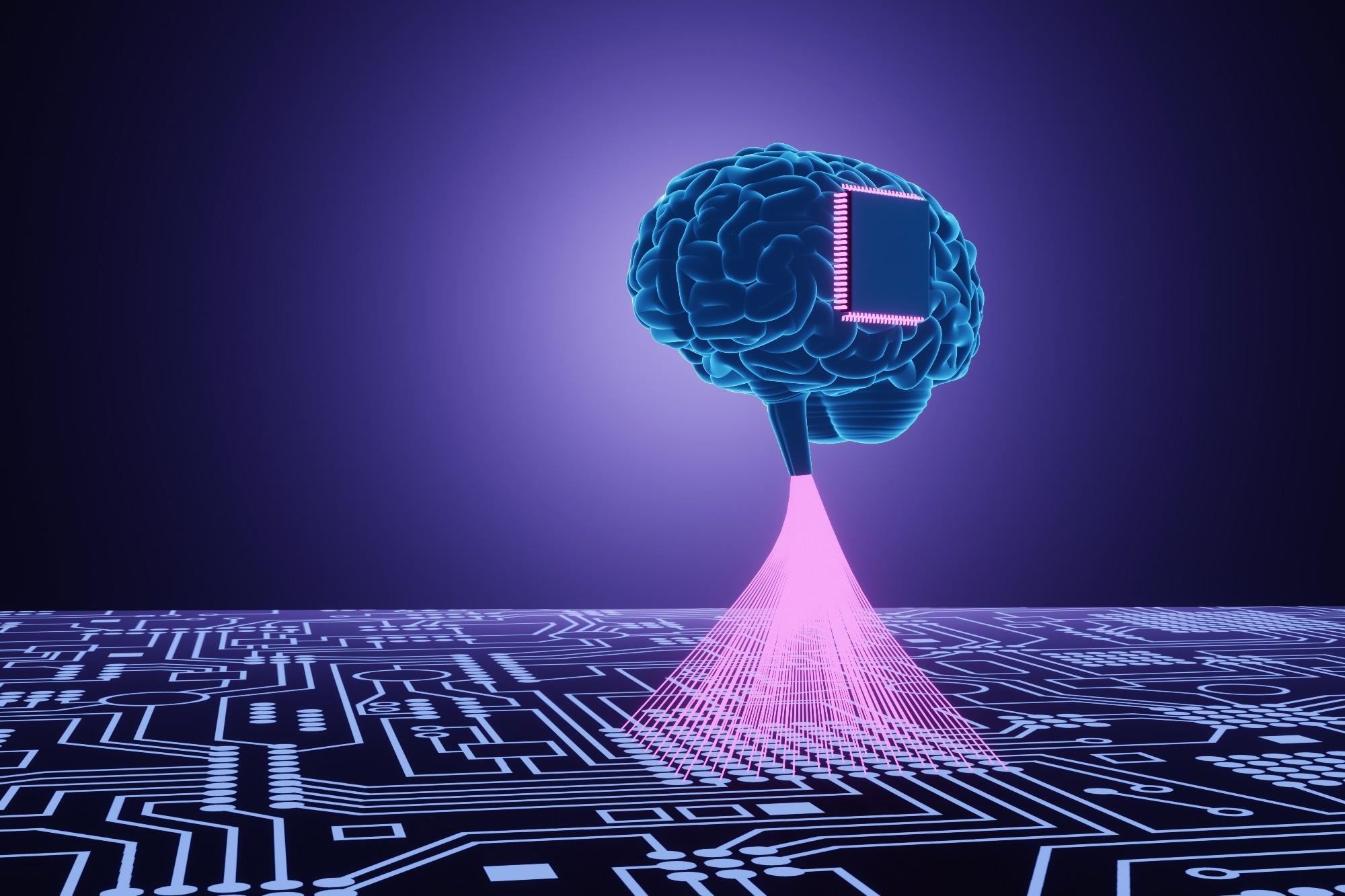Learn about brain health and nootropics to boost brain function
Brainoware: A breakthrough AI approach using brain organoids for advanced computation

In a study published in the journal Nature Electronics , researchers in the United States of America developed an artificial intelligence (AI) hardware approach named “Brainoware” that employs adaptive reservoir computation of the brain organoid neural networks (ONNs). They found that the approach could achieve nonlinear dynamics, fading memory properties, and unsupervised learning, demonstrating its practical potential in tasks such as nonlinear equation prediction and speech recognition.
Study: Brain organoid reservoir computing for artificial intelligence. Image Credit: Dragon Claws / Shutterstock Study: Brain organoid reservoir computing for artificial intelligence . Image Credit: Dragon Claws / Shutterstock Background
Silicon computer chips majorly drive the artificial neural networks (ANNs) that form the basis of AI. However, training ANNs on these chips has limitations such as high energy and time consumption, the Neumann bottleneck (physical segregation of data from data processing), and slowing of Moore’s law (slower doubling of transistors in an integrated circuit). This emphasizes the need to design new AI hardware approaches.
The human brain, with its complex three-dimensional network of cells and synapses, inspires the development of AI hardware due to its energy efficiency, neurogenesis, and neuronal plasticity that enable the processing of noisy data at minimal training cost. While neuromorphic chips attempt to mimic brain functions, there is a need to enhance their capabilities in terms of processing information, addressing real-life uncertainty, and utilizing energy.
Brain organoids are three-dimensional aggregates developed in vitro using stem cells to mimic brain structure and function. Researchers in the present study developed a novel AI hardware system named “Brainoware” using brain organoids, which harnesses reservoir computation and learning abilities of neural networks of the organoid. About the study
Brainoware was integrated into a reservoir computing framework with three main components: an input layer, a reservoir layer (organoid), and an output layer. The system was constructed by mounting a functional brain organoid, developed using human pluripotent stem cells, onto a high-density multielectrode array (MEA). The organoid formed the reservoir layer and showed the presence of various brain cell types, early brain-like structures, and network electrical activity. The organoid received signals via the input layer, which converted time-dependent inputs into spatiotemporal sequences of electric stimulation. The brain organoid acted as an “adaptive living reservoir” that mapped these signals to the ONNs. In the output layer, the MEA recorded neural activities representing the reservoir state (using techniques like linear or logistic regression), and decoded them to provide readouts for applications like classification, recognition, and prediction.
The physical reservoir properties of Brainoware were tested, including nonlinear dynamics, spatial information processing, and fading memory, by assessing the ONN’s response to stimulations of varying pulse times and voltages. The system was then applied to real-world tasks such as speech recognition and nonlinear chaotic equation prediction.
In the speech recognition task, Brainoware was required to identify the speaker’s vowels in a speaker pool. A total of 240 audio clips of isolated Japanese vowels pronounced by eight different male speakers were used to train the system, and the evoked responses were classified by logistic regression. Functional connectivity changes in the organoid before and during training were measured separately. In the next task, Brainoware was made to predict the Hénon map, a nonlinear dynamic system with chaotic behavior. A two-dimensional Hénon map was decomposed to one dimension and used as an input to Brainoware. The evoked activity was recorded before and during training and compared with controls. Results and discussion
Brainoware showed the properties of a physical reservoir. The nonlinear response, spatial processing, and fading dynamics of ONNs could be controlled by modifying the input stimulation parameters. Stronger responses and slower relaxation were observed with high voltage pulses and long duration. The dynamics of Brainoware were found to be in accordance with that of ANNs and memristors. Through training, Brainoware was found to enhance its computational performance and exhibit unsupervised learning capabilities through its adaptive living reservoir.
Brainoware improved its accuracy over training from 51% to 78% in the speech recognition task, suggesting the triggering of unsupervised learning abilities of the organoid via electrical stimulation. Test results indicated that training reshaped the functional connectivity of the organoid, thus initiating unsupervised learning.
Additionally, Brainoware could successfully predict the Hénon map and outperformed other methods, such as linear regression and ANN, with a long short-term memory unit. Brainoware could not perform without the organoid, as indicated by the nil regression score of the organoid-less control system. The performance was found to improve with training, as the improved regression scores indicated. Test results showed that Brainoware’s learning activity was dependent on neural plasticity. Conclusion
In the present study, researchers introduced Brainoware as a reservoir computing hardware that harnesses the computational power of brain organoids and demonstrated its adaptability, plasticity, and potential to address challenges in current AI hardware. Despite being highly promising, the Brainoware approach encounters challenges in organoid generation and maintenance, power consumption by the peripheral equipment, the use of flat and rigid MEAs, and a lack of efficient data management tools. In the future, customized, low-power, brain-inspired systems could be developed with advanced brain-machine interfaces and data management software for improved applicability and accuracy.
Read more at www.news-medical.net